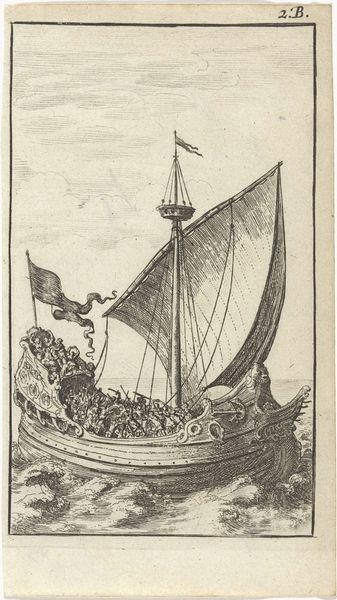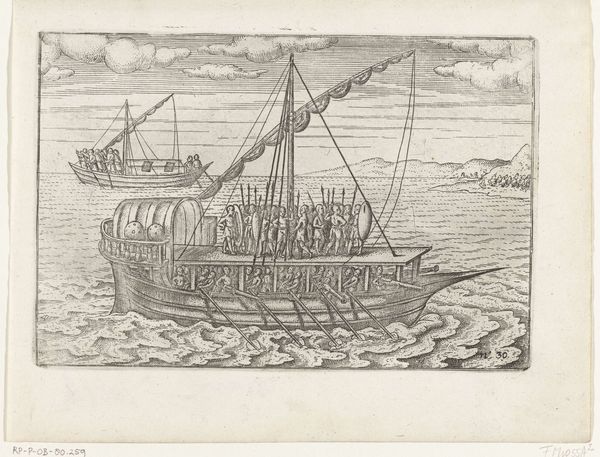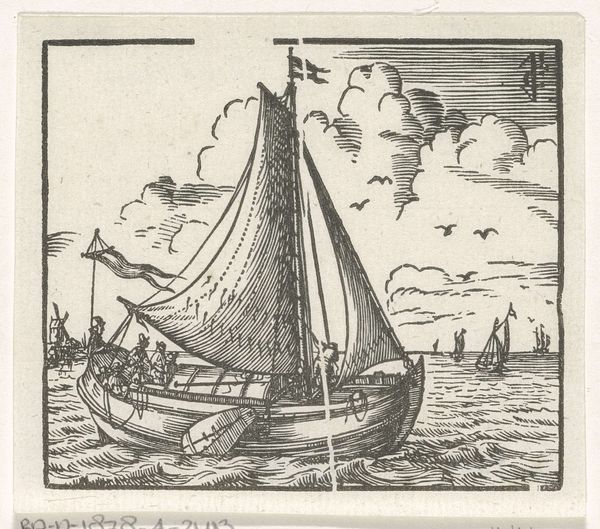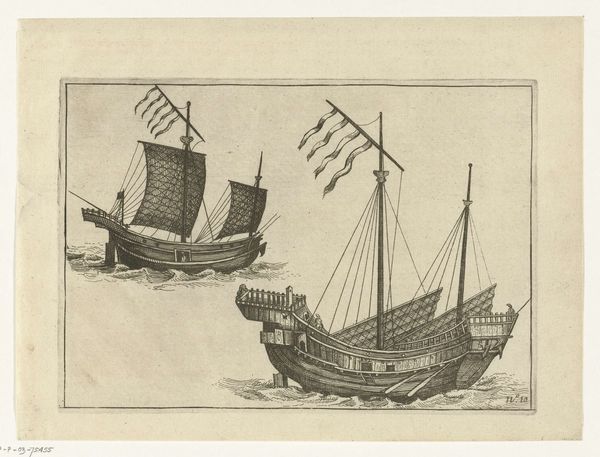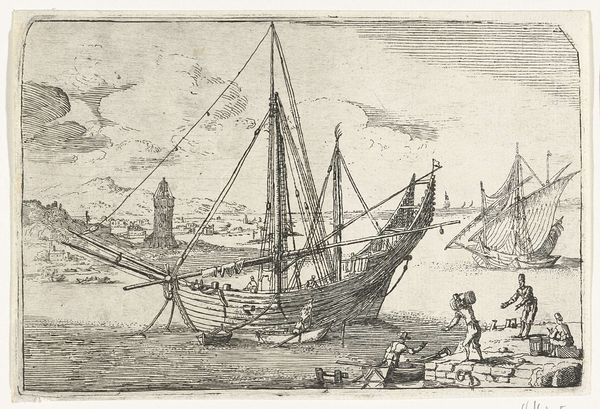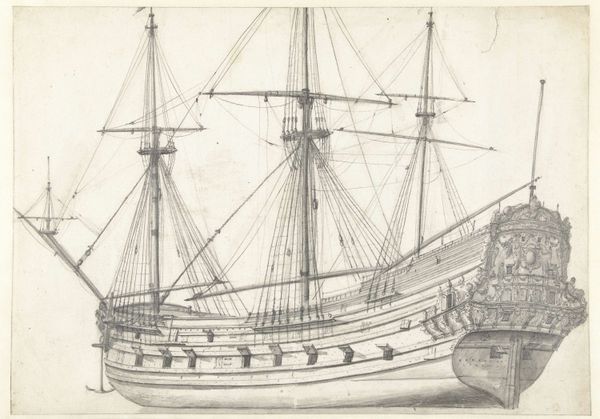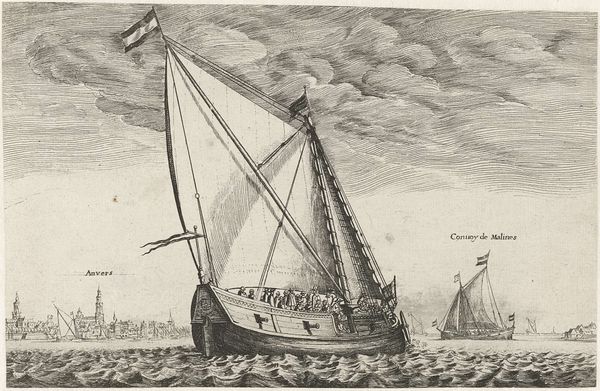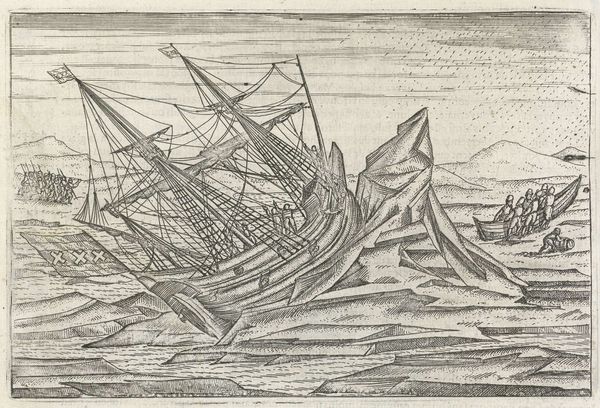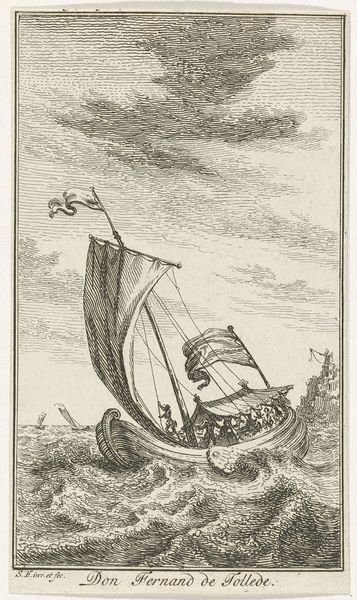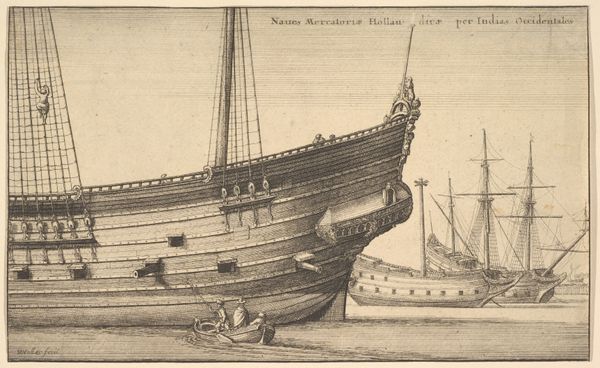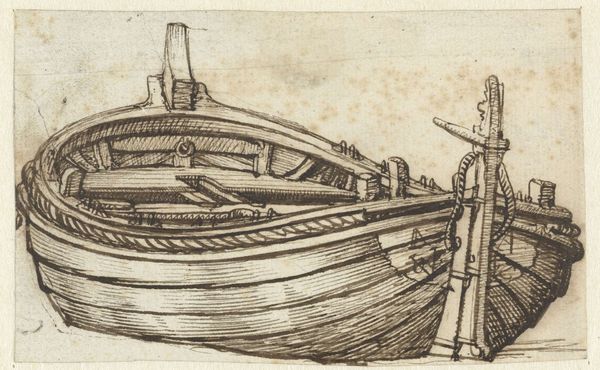
print, engraving
#
medieval
# print
#
pen sketch
#
pencil sketch
#
old engraving style
#
landscape
#
figuration
#
line
#
history-painting
#
engraving
Dimensions: height 166 mm, width 134 mm
Copyright: Rijks Museum: Open Domain
Editor: Here we have "A Herring Buss," an engraving by Meester W met de Sleutel, dating back to around 1490. I’m immediately drawn to the ship’s sturdy, almost fortress-like quality as it navigates what looks like some pretty turbulent waters. How do you interpret this work, particularly given its historical context? Curator: It's fascinating, isn't it? Think about what the herring buss represents in the late 15th century. It’s not just a fishing vessel; it’s a symbol of economic power, of the rise of merchant classes and early capitalism, particularly in the Low Countries. How does this image challenge or reinforce contemporary perceptions about labor or colonialism? Editor: So, this isn’t just about fishing. It’s tied to larger historical power structures. Are those barrels on the ship part of that story, related to trade? Curator: Precisely. They are critical components that allowed processing and storage at sea. Who exactly does that benefit, and who may not profit? Consider how advancements like the herring buss, enabled certain social classes to accrue capital and power. Does the print aesthetic change your perception of labor? Editor: That makes me think about the fishing industry even today, about sustainable fishing and labor exploitation in global trade. So, by showcasing the buss, is the artist also, perhaps unintentionally, revealing emerging socio-economic divides? Curator: Exactly. The image becomes a complex commentary on emerging social stratification and exploitation in that era. It encourages a reflection on continuities with modern social issues, urging you to examine who benefits from resource extraction and how visual culture often subtly obscures that cost. What has changed from 1490 till today? Editor: Wow, I never would have thought that a seemingly straightforward image of a ship could open up such a layered discussion about economic and social dynamics. Thank you! Curator: The power of art lies precisely there, in revealing hidden dimensions. The challenge now lies in examining how the artwork makes one re-evaluate what one already knows about history.
Comments
rijksmuseum about 2 years ago
⋮
This unique print features the earliest representation of a herring buss. This type of fishing vessel came into use in the 12th century to catch the herring that was so important for the Netherlands. Like many early engravings, this one was also made by a silversmith. The master, probably active in Bruges, was clearly trained in metal engraving. Overlapping masts, ropes and waves are confidently incised in the copper plate.
Join the conversation
Join millions of artists and users on Artera today and experience the ultimate creative platform.
